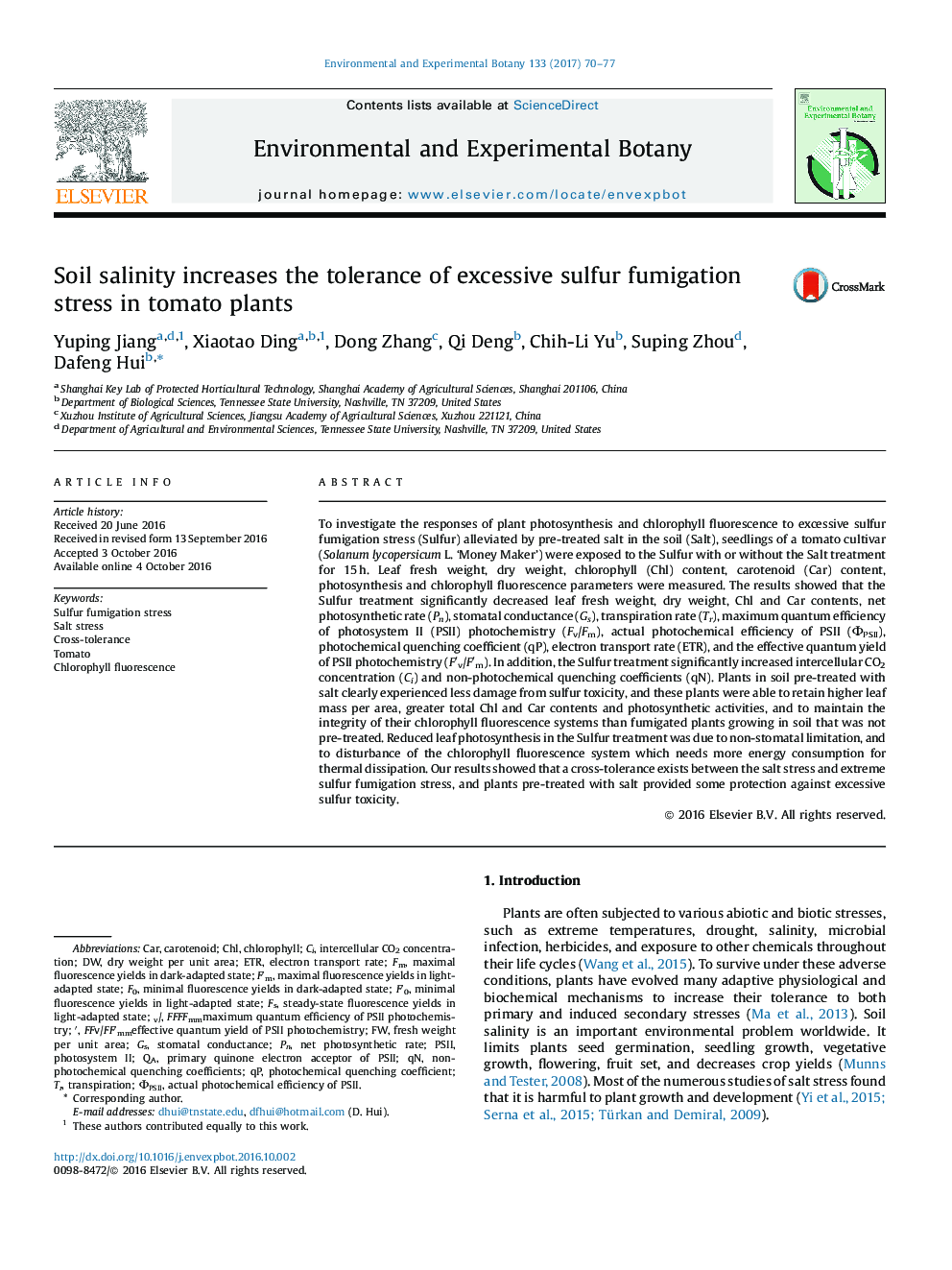| کد مقاله | کد نشریه | سال انتشار | مقاله انگلیسی | نسخه تمام متن |
|---|---|---|---|---|
| 6388815 | 1628044 | 2017 | 8 صفحه PDF | دانلود رایگان |
- Cross-tolerance between salinity and sulfur fumigation stress exists on tomato seedlings.
- Excessive sulfur damages photosynthesis and chlorophyll fluorescence performance.
- Salinity reduces damages by increasing leaf quality and pigment contents.
- Salinity stimulates recovery by improving chlorophyll fluorescence system performance.
- Salinity improves the tolerance of tomato plants to excessive sulfur fumigation stress.
To investigate the responses of plant photosynthesis and chlorophyll fluorescence to excessive sulfur fumigation stress (Sulfur) alleviated by pre-treated salt in the soil (Salt), seedlings of a tomato cultivar (Solanum lycopersicum L. 'Money Maker') were exposed to the Sulfur with or without the Salt treatment for 15 h. Leaf fresh weight, dry weight, chlorophyll (Chl) content, carotenoid (Car) content, photosynthesis and chlorophyll fluorescence parameters were measured. The results showed that the Sulfur treatment significantly decreased leaf fresh weight, dry weight, Chl and Car contents, net photosynthetic rate (Pn), stomatal conductance (Gs), transpiration rate (Tr), maximum quantum efficiency of photosystem II (PSII) photochemistry (Fv/Fm), actual photochemical efficiency of PSII (ФPSII), photochemical quenching coefficient (qP), electron transport rate (ETR), and the effective quantum yield of PSII photochemistry (Fâ²v/Fâ²m). In addition, the Sulfur treatment significantly increased intercellular CO2 concentration (Ci) and non-photochemical quenching coefficients (qN). Plants in soil pre-treated with salt clearly experienced less damage from sulfur toxicity, and these plants were able to retain higher leaf mass per area, greater total Chl and Car contents and photosynthetic activities, and to maintain the integrity of their chlorophyll fluorescence systems than fumigated plants growing in soil that was not pre-treated. Reduced leaf photosynthesis in the Sulfur treatment was due to non-stomatal limitation, and to disturbance of the chlorophyll fluorescence system which needs more energy consumption for thermal dissipation. Our results showed that a cross-tolerance exists between the salt stress and extreme sulfur fumigation stress, and plants pre-treated with salt provided some protection against excessive sulfur toxicity.
Journal: Environmental and Experimental Botany - Volume 133, January 2017, Pages 70-77
